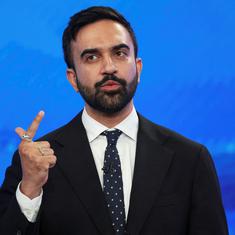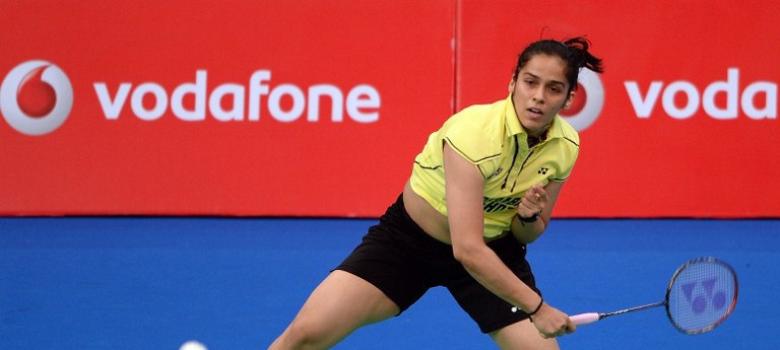But it also highlights an interesting anomaly that is worth examining – for in this could lie the mantra for greater success not just in badminton, but other disciplines too.
Like most other sports establishments in India, the Badminton Association of India is run like a fief without essential checks and balances. Several players – including the redoubtable Prakash Padukone – have had feuds with the association over its governance and vision, but to no great avail.
Yet, while the national association has not mended its ways too much in the past decade or so, India’s fortunes in badminton have seen a dramatic upsurge. The rise has been led by the arrival of the talismanic Saina Nehwal and, in the wake of her successes, a clutch of players – both women and men – who are capable of beating the best.
This, quite remarkably, includes even the Chinese, hitherto considered invincible, as Srikanth showed in the China Open when he defeated six-time world champion Lin Dan. In my opinion, this rates among the great sports achievements in independent India.
So what is working for badminton? Former international Sanjay Sharma lists a few things:
a) Strong legacy that is now being actualised.
b) Physique and constitution of Indians.
c) Good infrastructure.
d) Enlightened and strict coaching.
This is insightful. Let’s look at each in turn.
Past winners
It is often forgotten how good Indians actually have been at badminton, even in the days where there was very poor infrastructure and poor rewards. For socio-cultural reasons, this was more telling in the men’s game than the women’s.
For instance, Nandu Natekar won international acclaim in the late 1950s and ’60s. Prakash Padukone went a step further by winning the All England Championships in 1980. His successor was Pullela Gopichand, who won the All England too, albeit 21 years later.
The aptitude of Indians for badminton is established by the success of the aforementioned three. Supple bodies, strong wrists, deft skills make Indians potent players. The time lag between the successes of Natekar, Padukone and Gopichand, however, bespeak the absence of robust administration, which is responsible for providing the infrastructure and for marketing the sport.
Widening base
The story gets a strong and happy twist at the run of the millennium. Badminton now emerges as sport of choice for several youngsters across the country with the arrival of Saina Nehwal, whose successes (and the rewards she reaps) incentivise it further.
Basic infrastructure is created – not necessarily of international standards – in schools, colleges, townships and clubs. Since badminton – like table tennis, tennis, basketball and some other sports – is also gender friendly, more women get involved, leading to a wider player base.
More critical, however, is the expertise which arrives with former players like Padukone, Vimal Kumar, Gopichand opening up academies – with or without the blessings of the national association – to impart coaching to youngsters.
Gopi's tunes
In this aspect, Gopichand’s academy at Hyderabad has produced remarkable results and willy-nilly become the epicentre for the sport in the country. Most of the current star players are either enrolled, or have emerged from there: PV Sindhu, Srikanth, Kashyap, in the not-too-distant past Ashwini Ponnappa, and till recently Saina.
Gopi’s appointment as national coach and selector when he is the owner of the academy where the players train has, it must be mentioned, come in for flak. The matter even reached the courts when some players took objection. But the stupendous results he has achieved have mitigated the controversy.
According to Sanjay Sharma, the contribution of Gopichand and Saina in putting India on the international map cannot be understated. “They are gluttons for hard work, have deep ambition and don’t settle for anything less than the best,” he said. “That is rubbing off on everybody else.”
That Gopi and Saina may have fallen out (sort of) does not take from their inspiring achievements: many youngsters want to be the next Saina, and most want to join Gopi’s academy, believing it will make them world class players.
Not all those who play or join the academy will become world-beaters, but at least it has stoked such widespread interest that parents and educational institutions are willing to create time and opportunities for them to acquire the skills. And sponsors are willing to back them financially.
So, if badminton is used as a test case, what does it offer India to excel in other sports? In my opinion, these are:
a) Concentrate for now on disciplines that suit the Indian physique, culture and temperament instead of chasing all sport. Since this is a diverse country, the disciplines can be varied: for example, wrestling, boxing, archery, tennis, boxing.
b) Involve more and more girls. Across disciplines, women have produced more medals and better results in the past two-three decades. Now is the time to break the socio-cultural shackles.
c) Create basic infrastructure for these sports.
d) Get more former players involved in coaching. If they are Indians, even better, since they can communicate better with their wards.
e) Don’t depend overly on the association/federation. Once the results come, the establishment falls in line. And sponsors start queuing up too.










